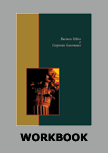Greenpeace:
Working for a "Green and Peaceful Future"




|
|
ICMR HOME | Case Studies Collection
Case Details:
Case Code : BECG041
Case Length : 16 Pages
Period : 1971-2004
Pub. Date : 2004
Teaching Note :Not Available
Organization : Greenpeace
Industry : Non Profit Organization, NGO
Countries : Global
To download Greenpeace:
Working for a "Green and Peaceful Future" case study (Case Code:
BECG041) click on the button below, and select the case from the list of available cases:

Price:
For delivery in electronic format: Rs. 500 ;
For delivery through courier (within India): Rs. 500 + Rs. 25 for Shipping & Handling Charges
»
Business Ethics Case Studies
» Case Studies Collection
» ICMR Home
» Short Case Studies
» View Detailed Pricing Info
» How To Order This Case
» Business Case Studies
» Case Studies by Area
» Case Studies by Industry
» Case Studies by Company

Please note:
This case study was compiled from published sources, and is intended to be used as a basis for class discussion. It is not intended to illustrate either effective or ineffective handling of a management situation. Nor is it a primary information source.
|
|
<< Previous
"Greenpeace exists because this fragile Earth deserves a voice."
- www.greenpeace.org.
"What we do is draw the attention of the public to the ongoing ecological plight of the planet, that's what we do, and we make no bones about it. We continue to sound the alarm."
- Lynette Thorstensen, coordinator of Greenpeace International's atmosphere campaign.1 .
"We all want a Greenpeace that shouts about potential problems... but we should not trust them to be the sole source of information"
- Dr. Lomborg, former member, Greenpeace and author of "The Skeptical Environmentalist".2
Introduction
In June 2003, thirty five Greenpeace activists were arrested near the headquarters of oil major ExxonMobil in Dallas, USA where the annual shareholder meeting was being held. They were charged with breaking the law and disrupting work. The activists had used a van to block the entrance of the company's office and had chained themselves to the front gate and to the van.
|
Through this unique demonstration, the Non-Government Organization (NGO) wanted to bring to the world's notice the damage ExxonMobil was doing to the environment in its quest for profits. Greenpeace, the largest environmental organization in the world, was registered as a "private Non-for-profit organization"3 in 1971 in Canada. By the early 2000s, Greenpeace had an international membership of over 2.8 million,4 the largest for any environment organization, and offices in more than 41 countries around the globe. Its large network and assets worth $360 million have led people to characterize Greenpeace as a regular business organization. Greenpeace International has its headquarters in The Netherlands.
|
|
Upto the 1990s, Greenpeace activists used controversial methods to protest against business organizations and governments that they believed were acting in a way that harmed the environment. But gradually, business organizations, governments and people around the world started to view Greenpeace activists just as a group of hippies bent on creating a nuisance, rather than a group of socially and environmentally responsible people.
|
|
When Greenpeace's membership and donations started to fall in the mid 1990s, it was time for this NGO to have a re-look at its own functioning. Greenpeace worked fast to reform its approach and to discard the image of being anti-liberal and anti-business. Since the mid 1990s, Greenpeace campaigns have been more peaceful, better researched into and most importantly, more open to discussions. Greenpeace realized that just ringing the alarm against an organization that was damaging the environment was not enough; it needed to suggest and bring about constructive changes in the organization's policies. Using this new approach, Greenpeace set up its own research and development facilities to find answers to problems relating to the environment. |
Greenpeace:
Working for a "Green and Peaceful Future"
- Next Page>>
|
|





